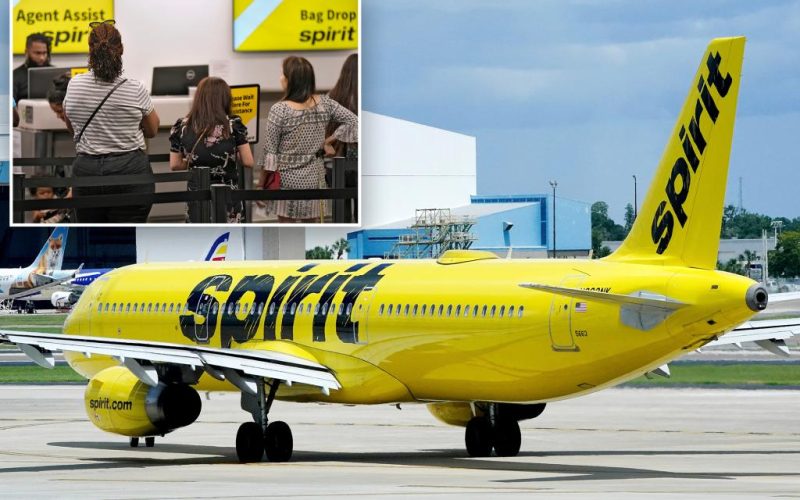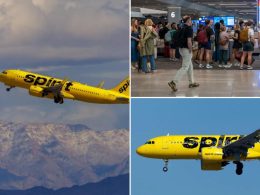Spirit Airlines said Monday that it has filed for bankruptcy protection and will attempt to reboot as it struggles to recover from the pandemic-caused swoon in travel and a failed attempt to sell the airline to JetBlue.
Spirit, the biggest US budget airline, has lost more than $2.5 billion since the start of 2020 and faces looming debt payments totaling more than $1 billion over the next year.
Spirit said it expects to operate as normal as it works its way through a prearranged Chapter 11 bankruptcy process and that customers can continue to book and fly without interruption.
Shares of Miramar, Florida-based Spirit dropped 25% on Friday, after The Wall Street Journal reported that the airline was discussing terms of a possible bankruptcy filing with its bondholders.
It was just the latest in a series of blows that have sent the stock crashing down by 97% since late 2018 — when Spirit was still making money.
CEO Ted Christie confirmed in August that Spirit was talking to advisers of its bondholders about the upcoming debt maturities. He called the discussions a priority, and said the airline was trying to get the best deal it could as quickly as possible.
“The chatter in the market about Spirit is notable, but we are not distracted,” he told investors during an earnings call.
“We are focused on refinancing our debt, improving our overall liquidity position, deploying our new reimagined product into the market, and growing our loyalty programs.”
People are still flying on Spirit Airlines. They’re just not paying as much.
In the first six months of this year, Spirit passengers flew 2% more than they did in the same period last year. However, they are paying 10% less per mile, and revenue per mile from fares is down nearly 20%, contributing to Spirit’s red ink.
It’s not a new trend. Spirit failed to return to profitability when the coronavirus pandemic eased and travel rebounded. There are several reasons behind the slump.
Spirit’s costs, especially for labor, have risen. The biggest US airlines have snagged some of Spirit’s budget-conscious customers by offering their own brand of bare-bones tickets. And fares for US leisure travel — Spirit’s core business — have sagged because of a glut of new flights.
The premium end of the air-travel market has surged while Spirit’s traditional no-frills end has stagnated.
So this summer, Spirit decided to sell bundled fares that include a bigger seat, priority boarding, free bags, internet service and snacks and drinks.
That is a huge change from Spirit’s longtime strategy of luring customers with rock-bottom fares and forcing them to pay extra for things such as bringing a carry-on bag or ordering a soda.
In a highly unusual move, Spirit plans to cut its October-through-December schedule by nearly 20%, compared with the same period last year, which analysts say should help prop up fares.
But that will help rivals more than it will boost Spirit.
Analysts from Deutsche Bank and Raymond James say that Frontier, JetBlue and Southwest would benefit the most because of their overlap with Spirit on many routes.
Spirit has also been plagued by required repairs to Pratt & Whitney engines, which is forcing the airline to ground dozens of its Airbus jets.
Spirit has cited the recall as it furloughed pilots.
The aircraft fleet is relatively young, which has made Spirit an attractive takeover target.
Frontier Airlines tried to merge with Spirit in 2022 but was outbid by JetBlue.
However, the Justice Department sued to block the $3.8 billion deal, saying it would drive up prices for Spirit customers who depend on low fares, and a federal judge agreed in January.
JetBlue and Spirit dropped their merger two months later.
US airline bankruptcies were common in the 1990s and 2000s, as airlines struggled with fierce competition, high labor costs and sudden spikes in the price of jet fuel.
PanAm, TWA, Northwest, Continental, United and Delta were swept up.
Some liquidated, while others used favorable laws to renegotiate debts such as aircraft leases and keep flying.
The last bankruptcy by a major US carrier ended when American Airlines emerged from Chapter 11 protection and simultaneously merged with US Airways in December 2013.








